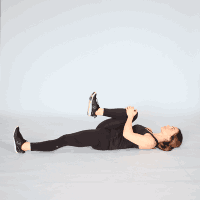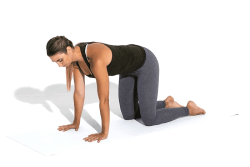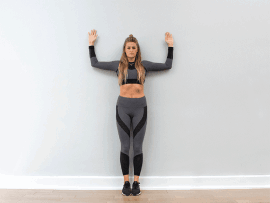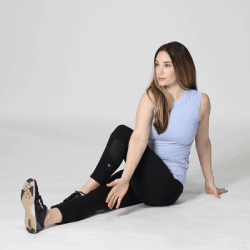A healthy spine is crucial in order to lead a pain-free, active lifestyle. But when spine conditions strike, they can bring discomfort, limited mobility, and a host of other challenges. Fortunately, physical therapy offers hope for those dealing with spine issues. In this blog, we will delve into physical therapy and how it can benefit those with spine conditions. We will also explore what spine conditions entail, how they impact our lives, and how physical therapy can be a transformative ally in the quest for relief and recovery.
Contents
Spine Conditions Improved By Physical Therapy
Our spine comprises vertebrae, discs, and intricate networks of nerves and muscles. However, various factors, including aging, injuries, or genetic predispositions, can lead to spine conditions. Here are some common types of spine conditions that can benefit from physical therapy:
- Herniated Disc: A herniated disc occurs when the inner core of a spinal disc pushes through its outer layer. This can lead to pain, numbness, or weakness in the back. Physical therapy can help alleviate pain, improve mobility, and teach techniques to avoid exacerbating the condition.
- Spinal Stenosis: Spinal stenosis is characterized by the narrowing of the spaces within the spine, which can then put pressure on the nerves and cause pain. Physical therapy focuses on exercises that enhance spinal flexibility and strengthen supporting muscles.
- Scoliosis: Scoliosis is an abnormal curvature of the spine. Physical therapy may include posture correction exercises and techniques to manage pain and maintain mobility.
- Degenerative Disc Disease: This involves the breakdown of the spinal discs, leading to pain and reduced flexibility. Physical therapy can help patients manage symptoms, and improve function.
- Spinal Fractures: Fractures in the spine can result from accidents or underlying conditions. Physical therapy is crucial in post-fracture rehabilitation to regain strength, balance, and mobility.
- Sciatica: Sciatica is characterized by pain that radiates along the path of the sciatic nerve, often caused by a herniated disc. Physical therapy includes exercises to relieve nerve pressure and promote healing.
- Spondylolisthesis: This condition occurs when one vertebra slips forward over another, often causing lower back pain. Physical therapy focuses on core strengthening and stability exercises to reduce strain on the affected area.
- Post-Surgical Recovery: Following spine surgery, physical therapy is instrumental in helping patients regain mobility, manage pain, and prevent complications.
Role Of Physical Therapy In Managing Spine Conditions
Let’s explore the essential role that physical therapy plays in the management of spine conditions:
- Accurate Assessment: Physical therapists begin by conducting a thorough evaluation of the patient’s spine condition. This assessment includes an examination of the spine’s range of motion, strength, posture, and any associated pain. This critical step ensures a tailored treatment plan.
- Pain Management: Pain is often a primary concern for individuals with spine conditions. Physical therapists employ various pain management techniques, such as heat or cold therapy, electrical stimulation, and manual therapy, to alleviate discomfort and reduce inflammation.
- Exercises for Strength and Stability: Physical therapy includes a regimen of exercises designed to strengthen the muscles surrounding the spine. These exercises enhance stability and support for the spine, reducing the risk of further complications.
- Flexibility and Range of Motion: Stiffness and limited mobility are common challenges in spine conditions. Physical therapists incorporate stretching exercises and manual techniques to improve flexibility and increase the spine’s range of motion.
- Posture Correction: Correcting posture is crucial for spine condition management. Physical therapists educate patients on proper body mechanics and ergonomics to prevent further strain and discomfort.
- Core Strengthening: A strong core is essential for spinal stability. Physical therapy provides additional support to the spine by including exercises that target the core muscles.
- Tailored Treatment Plans: Every individual’s spine condition is unique, and physical therapists craft personalized treatment plans based on the patient’s specific needs and goals.
- Monitoring Progress: Physical therapists closely monitor the patient’s progress throughout the treatment process. They adjust the treatment plans according to the needs of the patients to get better outcomes.
- Pre and Post-Surgery Rehabilitation: For those requiring spine surgery, physical therapy plays a vital role in preparing the patient for the procedure and aiding in recovery. Rehabilitation helps individuals regain strength and mobility.
Exercises For Spine Conditions
Spine conditions can bring discomfort and limit your mobility, but incorporating targeted exercises into your routine can make a significant difference in managing these issues. Always consult with a healthcare provider or physical therapist before beginning any exercise program for spine conditions to ensure they are suitable for your specific condition. Here are some exercises that may help:
Cat-Cow Stretch
- Start on your hands and knees in a tabletop position.
- Inhale as you arch your back, lifting your head and tailbone (Cow Pose).
- Exhale as you round your back, tucking your chin and tailbone (Cat Pose).
- Repeat this flowing movement 10-15 times.
Pelvic Tilts
- Lie on your back with your knees bent and feet flat on the floor.
- Tighten your abdominal muscles to flatten your lower back against the floor.
- Hold for a few seconds and then release.
- Repeat 10-15 times.
Knee-to-Chest Stretch

- Lie on your back with your knees bent and feet flat on the floor.
- Gently bring one knee toward your chest, holding it with both hands.
- Hold for 20-30 seconds and then switch legs.
- Repeat 2-3 times on each leg.
Child’s Pose
- Start in a kneeling position with your big toes touching and knees apart.
- Sit back onto your heels and reach your arms forward on the floor.
- Hold this stretch for 20-30 seconds while focusing on deep breathing.
Wall Angels
- Stand with your back against a wall, feet hip-width apart.
- Raise your arms to shoulder height and bend your elbows at 90 degrees.
- Slowly slide your arms upward along the wall as far as you can while keeping your elbows and wrists in contact with the wall.
- Slide your arms back down.
- Repeat this movement 10-15 times.
Bridging
- Lie on your back with your knees bent and feet flat on the floor.
- Tighten your abdominal muscles and lift your hips off the ground, creating a straight line from your shoulders to your knees.
- Hold for a few seconds and then lower your hips back down.
- Repeat 10-15 times.
Seated Spinal Twist
- Sit on the floor with your legs extended.
- Bend one knee and cross it over the other leg.
- Place your opposite elbow on the outside of the bent knee and gently twist your torso in that direction.
- Hold for 20-30 seconds and then switch sides.
- Repeat 2-3 times on each side.
Leg Raises
- Lie on your stomach with your forehead resting on your hands.
- Lift one leg off the ground as far as you can without straining, keeping your hips in contact with the floor.
- Lower the leg back down.
- Repeat with the other leg.
- Do 10-15 repetitions on each leg.
These exercises are general guidelines and may need to be modified based on your specific spine condition and fitness level. A physical therapist can provide you with a tailored exercise program designed to address your unique needs and help you manage your spine condition effectively.
How To Maintain A Healthy Spine After Rehabilitation?
To enjoy a healthy and pain-free spine in the long term, it’s essential to adopt habits and practices that promote spinal health. Here’s how you can maintain a healthy spine after rehabilitation:
- Stay Active: Regular physical activity is crucial for spine health. Aim for a balanced exercise routine that includes cardiovascular exercises, strength training, and flexibility exercises. Consult with your healthcare provider or physical therapist to design an exercise plan that suits your specific needs and condition.
- Maintain Proper Posture: Whether sitting, standing, or lifting objects, practice proper body mechanics. Consider ergonomic adjustments at your workspace, such as an ergonomic chair or keyboard tray.
- Lift Safely: When lifting heavy objects, use proper lifting techniques. Bend at your knees, keep the object close to your body, and avoid twisting your spine while lifting.
- Quit Smoking: Smoking can impair blood flow to the spine, reducing the nutrients and oxygen supplied to the discs. Quitting smoking can significantly improve spine health.
- Maintain a Healthy Weight: Excess weight places added stress on the spine, particularly the lower back. Maintaining a healthy weight through a balanced diet and regular exercise can alleviate this stress.
- Stretch and Mobilize: Incorporate stretching and mobility exercises into your daily routine to prevent stiffness.
- Invest in a Good Mattress and Pillow: A supportive mattress and pillow that align with your body’s natural curves can make all the difference. It promotes healthy spinal alignment during sleep.
- Manage Stress: Chronic stress can lead to muscle tension and pain in the neck and back. Practice stress-reduction techniques such as meditation, deep breathing, or yoga to maintain a relaxed state of mind and body.
- Regular Check-ups: Continue to see your healthcare provider or physical therapist for periodic check-ups, even after rehabilitation. Early detection of any potential issues allows for timely intervention.
Conclusion
Physical therapy for spine conditions is a practical and effective approach to managing pain, improving mobility, and enhancing overall well-being. By working closely with your healthcare providers and committing to the prescribed exercises and lifestyle adjustments, you can enjoy a healthier spine in the long term.
Remember that the journey to a healthier spine doesn’t end with rehabilitation; it’s a lifelong commitment. By staying consistent and proactive, you can look forward to a life free from the limitations of spine-related discomfort and enjoy the benefits of a strong, pain-free spine.
Physical Therapy helps patients recover from pain. If you’re experiencing Back, Shoulder, Knee, Neck, Elbow, Hip, or Arthritis pain, a physical therapist at PhysioMantra can help: Book an online physical therapy session.









